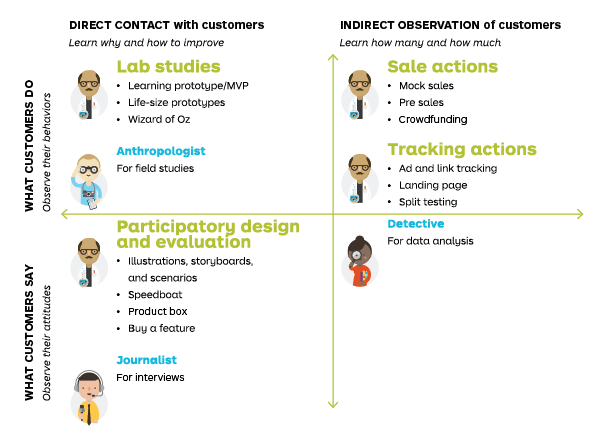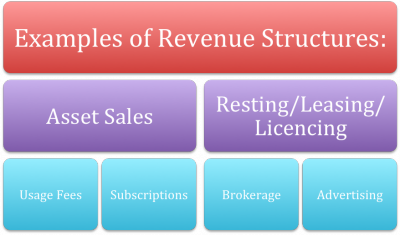Three Steps to Validating Startup Business Model
Businesses are based on ideas and assumptions. But the difference between a good and a bad business is in the ability to validate those assumptions. By validating your core assumptions, you save time and money. You ensure your startup’s business model will be able to weather the storms, be attractive and create a profit.
Now, the below steps follow closely the famous Business Canvas Model by Alexander Osterwalder. The model is useful for drawing up the hypothesis about how you can deliver, create and capture value.
Each step of validating your business model will examine different segments in the nine-step business model. So, let’s delve deeper into how you can validate your startup’s business model in three simple steps.
Step #1: How will your startup deliver value?
The first part of validation is about understanding how your startup is going to deliver value to its customers. You essentially need to validate three core ideas:
- What your value proposition is?
- How are you going to create and nurture customer relationships?
- How will the customers be able to access your startup?
Your value proposition shouldn’t be a singular benefit to the customer but a core value you are looking to offer. Good value propositions are about performance, customisation, design, price, cost-reductions, risk-reduction and accessibility.
In terms of customer relationships, your focus needs to be on solving how you will acquire, retain and upsell to your customers. Many businesses make the mistake of focusing just on acquiring new customers and forget about the importance of maintaining customer loyalty after the first purchase.
 What Must You Do When Creating a Virtual Innovation Lab?
What Must You Do When Creating a Virtual Innovation Lab?
Adopt a platform, provide experienced mentors, connect teams prior to events (and afterwards), and more. Find out other tips about creating your own virtual innovation lab by downloading this infographic.
Download Here
The third core assumption to validate deals with the customer channels. The channels determine how the customer will access your solution and there are typically two options for businesses to choose. You can either have a direct or indirect channel.
The core focus here should be on the customer. You’ve made assumptions of their pain points but the real question is whether these pain points are real. It can be tempting as a startup owner to think customers want the solution you are offering. But you really need to prove the pain is there – you need to validate the problem in order to validate the customers.
So, how can you validate these core ideas?
In order to validate your value proposition, your customer relationship and customer channels, you need to talk to the actual customers as well as conduct thorough market research. It’s important to pay attention to understanding what the customer pain points are and how your solution is actually going to solve them.
There are three clever ways to validate these assumptions and to talk directly to customers:
- Conduct market research.
- Talk to customers about the pain points and demonstrate how your solution works (create a Minimum Viable Product for this).
- Receive feedback and use it as validation through queries, interviews and surveys (use survey sites, landing pages, and cold calling).
Nabila Amarsy has written a compelling post on Strategyzer about the differences in customer experiments. The post points out how customer behaviour and responses will change regarding whether you are watching them or not. For example, if you observe customers using your product, you can focus on the non-verbal cues during the experiment. However, customers might also react and speak about the product differently when you are directly asking the questions. The key is to use both indirect and direct observation methods to validate your business model with customers.

Step #2: How will your startup create value?
Next, you need to validate your ability to actually create value. Your attention turns to three core issues of resources, activities and partnership. You must answer these three questions:
- Who are the partners that your startup will need to work with in order to get things working?
- What are the things that you need to do in order to generate things such as: your value proposition; distribution channels for your solution; customer relationships; revenue
- What are the specific resources you need to generate value?
In terms of the partnership, startups have numerous options available from starting a strategic alliance with a non-competitor to launching a joint venture. The issue also deals with buyer-supplier relationship. When it comes to activities, the startup must validate the supply chains, train and hire human capital and manage the customer communities. Much of this steps also deals with the competition and understanding what resources are needed in order to boost the startup’s competitiveness.
In order to validate the above points, the startup has two great options:
First, it can launch a minimum viable product (MVP). MVP will allow validating all three sections – it will outline what resources you need in order to create the solution, it will show what strategic partnership help or hinder the process, and it will make it easier to understand what activities can improve your startup’s ability to create the value.
At this stage, you could also begin validating the core points through a limited launch of the product or service. The limited and restricted launch will put your key assumption to test without jeopardising your startup’s finances.
Step #3: How will your startup capture value?
The final step to validating your business model deals with your ability to capture the value you’ve created with the previous segments. You will essentially need to figure out whether your startup has chosen to right approach to making a profit by reducing fixed costs and maximising your gross margin.
There are two core issues to validate at this point:
- What does the cost structure of your startup look like?
- What are the different ways you can generate revenue?
Validating directly with the customer:
Validating your startup’s ability to capture value will be easier if you’ve already taken the above two steps. With the creation of an MVP, you have an idea of the cost structure of delivering the solution to people. You’ve also paid attention to your customer service channels, identifying the marketing routes you need to take in order to acquire customers.
Furthermore, by talking to your customers, you’ve learned more about their views on pricing. You should further use surveys and competition pricing to identify what kind of revenue model best works for your business. You can’t just validate your market; you also need to ensure the market is willing to pay for your proposed solution. If you don’t achieve traction – if no one is willing to pay for your product – you haven’t nailed your value proposition. You don’t have a real problem because if there were a real problem, customers would pay. Therefore, testing pricing points is important at this point and it can be done easily in focus groups or with the help of a simple landing page.
Here you want to pay attention to the ways you can also create revenue. There is no singular model startups should use – the best revenue model depends on your product and your customer base.

It’s important to consider different revenue options during the validation process. You want to test customers’ willingness to subscribe to a certain payment structure – you could essentially be able to generate the same kind of revenue with two different models. However, customers might only prefer one of these options.
Calculating core metrics:
In terms of capturing value, startups have three key objectives:
- Being profitable
- Generating cash
- Attracting growth
In order to validate these core objectives, you need to focus on measuring the following metrics:
- Customer Acquisition Cost (CAC) – divide your sales and marketing costs for a given period by the number of customers you attracted during the same period.
- Retention – the number of customers you maintain even after initial purchase. Always check with inactive customers to find out why they are not using your product or service.
- Churn – the measure of customers who stop paying for your product.
- Life Time Value (LTV) – the duration customers stay with you multiplied by the monthly revenue you expect to get from the customer. LTV should always be 3x greater than CAC.
- Revenue – the money you bring in through sales and other income. Pay specific attention to Monthly Recurring Revenue (MRR).
Your bottom line is mostly influenced by CAC, LTV, revenue and churn. When you are validating your ability to capture value, these metrics will matter the most.
When you are validating metrics, you want to focus on the worst and the best assumptions. So, calculate the worst-case scenario first and then create estimates based on the higher end of predictions. These will be helpful as you start tracking your actual metrics, making it easier to adjust your outlook into a realistic view – when you are raising capital, this will be a key to success.
Define, Test and Correct
Validating a startup’s business model is reliant on key three behaviours: defining, testing and correcting. You don’t want to approach validating without having a clear set of assumptions you are testing – if you haven’t defined your hypothesis carefully it will be hard to validate whether you’re telling a compelling story or not.
In terms of testing and validating, startup’s need to go out into the real world and not just sit in front of the screen calculating figures. Market research, reports, calculations are all great tools for validating startup’s business model but you also need to emphasise actual opinions, figures and findings. Validations cannot just be assumptions but they must be based on evidence and data you’ve gathered.
Finally, the critical thing to realise about a business model is that it cannot be set in stone. When you are validating your core hypothesis, you might notice that things require refinement. Don’t be afraid to go through with this process and change your model. The best thing to remember is that failing early is much better than failing late.
Steve Blank has said, “You may be smart, but you are not smarter than the collective intelligence of your potential customers” and it perfectly reflects the importance of validating a business. You need to make assumptions about how you will create, deliver and capture value but you also need to validate those points through testing, talking and measuring.
By Martin Luenendonk
About the author
 Martin is a 2x entrepreneur, former venture capitalist and investment banker, and has helped startups raise $30 million in venture capital and focus on the right things to grow their business. He blogs on roadtofunding.com.
Martin is a 2x entrepreneur, former venture capitalist and investment banker, and has helped startups raise $30 million in venture capital and focus on the right things to grow their business. He blogs on roadtofunding.com.
Featured image via Shutterstock.









